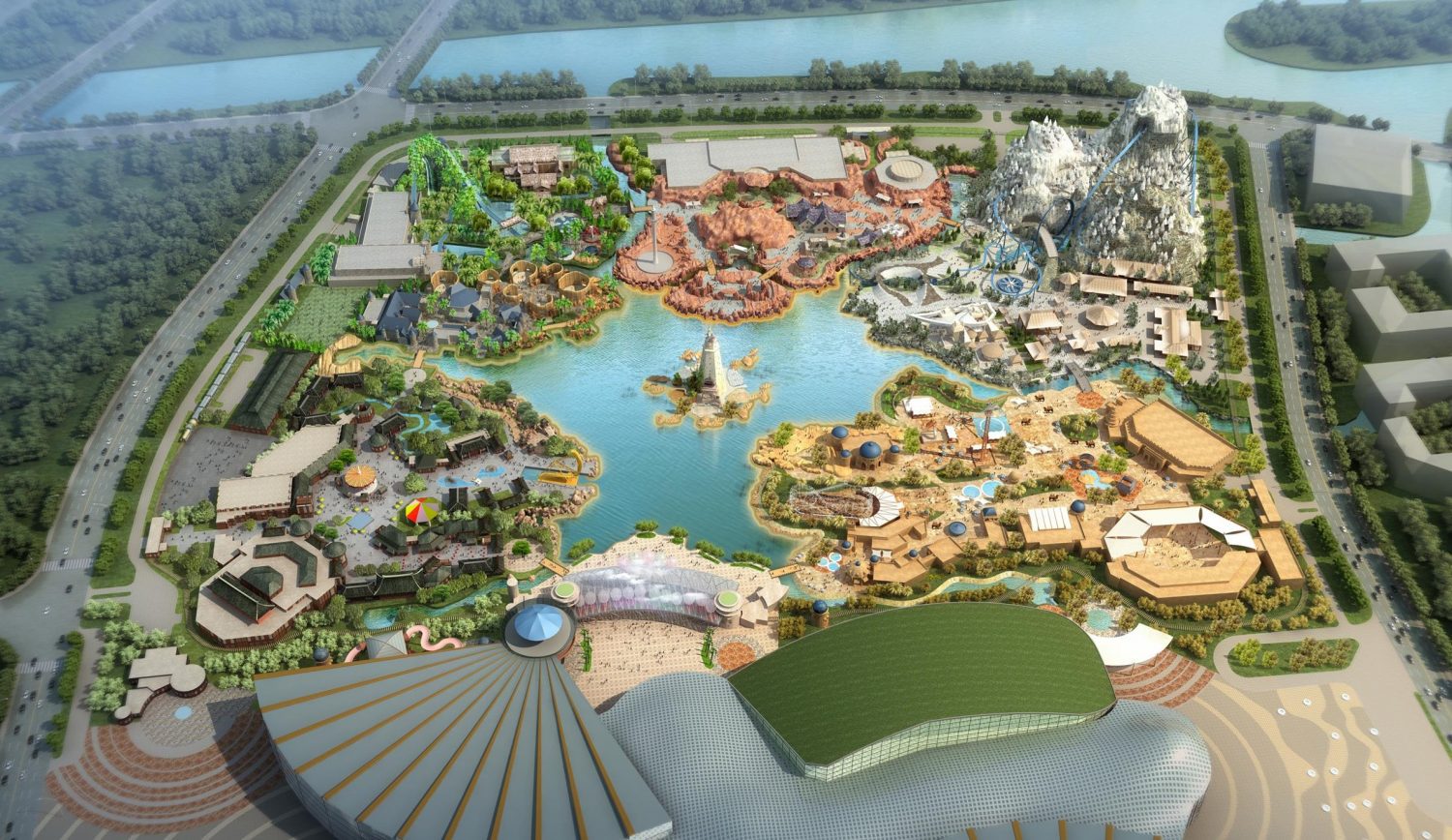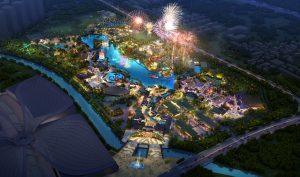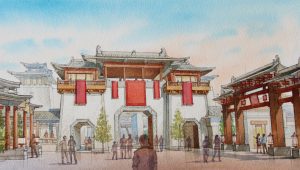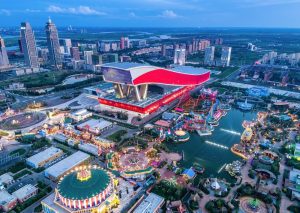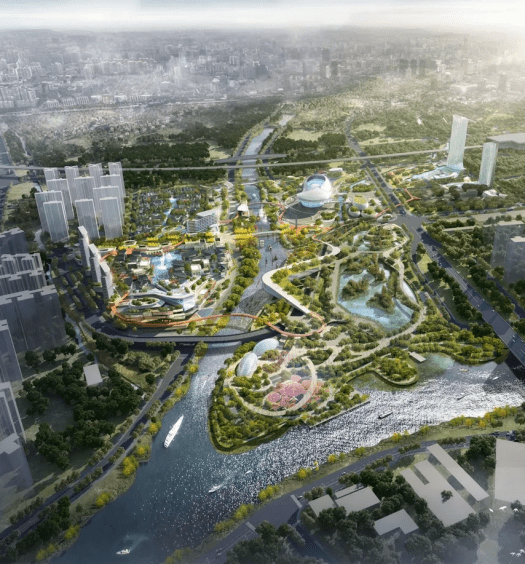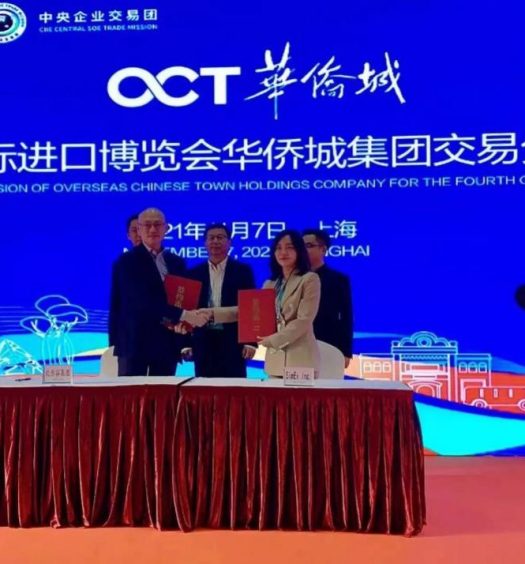By Bruce McMillen, partner and director of architecture, Romero VanRell Jeng McMillen & Associates
THIS publication covers the Chinese entertainment design market in detail, so its rapid growth should be no surprise to readers. The market is adding parks and mixed-use destinations, while growing attendance at remarkable rates.
Currently, China is poised to be the world’s largest entertainment market by attendance in 2020. In the next six years, there are an estimated 70 parks in planning or under construction. Beyond new construction, the data points to continued attendance growth. Providing parks continue to deliver quality theming and attractions that genuinely entertain visitors, the market will continue to improve its per capita attendance. Even with the current slowdown in the overall China real estate development market, to which most entertainment projects are attached, there is still a tremendous opportunity for qualified international firms to win new business.
As an architectural design firm with more than 65 Chinese entertainment projects to our credit, RVJMA actively participated in the evolution of this market. We’ve worked with most of the significant domestic developers, including Sunac, Wanda, OCT, Evergrande, Songcheng Group, Haichang and more. There’s a learning curve to getting started in China and this article intends to share both positive experiences and cautionary insights gained from working there for more than 20 years.
What does a typical project include?
Chinese entertainment projects, particularly large-scale developments for which international firms are hired, are markedly different from typical architectural commissions. Parks are commonly only one part of an overall mega-project which can range between one to five square kilometers, comprised of residential, malls, outdoor commercial and mixed-use parcels.
A single firm may provide overall master planning, but generally each component has separately awarded contracts. A typical development might include an outdoor theme park, a waterpark, ocean park or snow park, an indoor park or large family entertainment centre, a commercial street, hotels and resorts and many residential units. A typical theme park project may include 30 front-of-house buildings, 25 mechanical rides and five large attractions such as dark rides, theatres and outdoor arenas. Add to that eight to 10 back-of-house service buildings and 40 hectares of themed landscape and hardscape development, it is a tremendous amount of design work to be produced with incredibly fast turnarounds, just one of the challenges marking the experience of working in this market.
What are the barriers?
Breaking into the mainland Chinese market can be difficult. A robust international portfolio including themed design experience is mandatory and adept project management is vital. In the beginning years, your firm might consider using an experienced local marketing representative with access to the themed entertainment client base to provide client introductions, as our firm did in the early years.
After securing a client, business challenges abound. Business is done differently than in Western Europe, for example, and contracts and payment processes are complicated. Risk is often an inherent part of the process and we advise firms to pay extra attention to contract clauses and payment terms. Expect to negotiate both terms and fees.
The Chinese project development process is not uniform across all clients; however, specific patterns emerge. We would describe it as non-linear. The timeline for these projects is inevitably very compressed, with a complex decision making process due to ridged corporate structures and inter-departmental communication problems are typical within these large companies. For example, design decisions must almost always be made with vague guidance and incomplete information, only to be redesigned and resolved later. Executives make most decisions based on 3D renderings – plans and elevations will not suffice – and these need to be provided far in advance of design work being completed.
Every project has changes, but these projects have an above-average amount of modifications during the design process. Client decisions and specific instructions are not always final. For the best business results, you need to build the realities of these imprecise business and design conditions into your proposals. Travel presents a barrier for some. Expect client meetings monthly. It’s great for frequent flier status but can be exhausting for project managers, especially those with family responsibilities.
Language is another obvious barrier, one that can cause many difficulties. Any team seeking work can find translation services, but what is required for project success is careful interpretation. It’s not enough to simply translate the words. Meaning and nuance in client communications are best run through the filter of a native speaker with local cultural understanding, who you can trust with confidential business information.
The difference between translation and interpretation is a criteria for business success in this market that we cannot stress enough. From a language and cultural literacy standpoint, it’s also good to have design team members who represent the culture you’re designing for, to deliver a meaningful and impactful guest experience.
Working with a Local Design Institute (LDI) for these projects can also lead to another layer of uncertainty for designers regarding the quality of the final design product. At some point the design is handed off and the international design firm won’t be involved to guide construction documents or the construction administration process. Without site visits or art direction, the theming value and faithfulness of design execution can vary significantly. In the last five years, many LDIs’ capabilities have grown exponentially, partially from the volume of this type of work and partly from more exposure to successful parks.
Also, it is common that there is very limited contact between consultants and the LDI and all communication is forced through the client’s project management team. It complicates the process and requires excellent communication skills to surmount this challenge. However, if your design firm and the client management team can hit a collaborative stride, great (and profitable) projects can be the result.
What are the benefits?
After several decades working in China, our firm found innumerable benefits to working here – extremely creative designs, exposure to a deep and fascinating culture and of course, profitable project fees. For a team fulfilled by the creative aspects of design, these projects offer a world of satisfaction. Exposure to another part of the world and a very different logic broadens your perspective, design approach and your understanding of humanity. Large projects with wide scopes necessitate appropriately sized fees to cover the extensive workloads and the need for significant redesign throughout the design process.
Another benefit is the limited liability, since contracts are only for design, with no engineering or construction document responsibility. The extremely tight schedules, which are often a burden, also limit the time that can be spent on these projects, which can help them be more lucrative, due to the limitation of how many total staff hours can feasibly be spent in the available time frame. A typical theme park design schedule, from blank page through design development is approximately nine months – 12 weeks for the initial masterplan, 12 weeks for conceptual design of all the buildings and environments and 12 weeks for design development and landscaping.
One additional benefit is that clients who develop these types of mega-entertainment projects often build several of them, providing an opportunity for repeat work. Our firm has completed more than one project for the majority of our clients.
One benefit not often discussed with this work is the personal enrichment which comes from fostering cross-cultural understanding. It’s enlightening to share business practices and design ideas with our clients and illuminating to learn theirs. Entertainment design is a guest-focused endeavor and learning how to provide a guest experience that resonates with audiences from an entirely different cultural background – both what is similar and different – is a challenge. When accomplished, it is particularly meaningful.
Conclusion
If your firm has entertainment design experience, the ability to handle extensive projects on a short schedule and is looking to expand your market reach, we can recommend pursuing work in China. Considering the above issues, the final guidance we would provide is as follows. First, have someone in your corporate leadership or management team who is literate in mainland Chinese culture and language to increase your chances for understanding clients clearly; remember, it takes interpretation, not translation. Secondly, ensure your company has the financial stability and resources to weather bumps and hurdles along the way, as sometimes there are partial or late payments and other unexpected circumstances. If you set your firm up for success by understanding the challenges you face, and include contingency plans, it is possible to reap the rewards of these creative and financially rewarding projects.
About the Author
Bruce McMillen is a partner and director of architecture at Romero VanRell Jeng McMillen & Associates, a design firm that has guided the planning process of dozens of theme park projects in Asia, with a specialty in the Chinese mainland market. Current and former clients include Wanda, Sunac, Haichang, OCT, H. Brothers, Evergrande and DreamEast, to name a few. McMillen’s past projects also include work for Universal Studios and Walt Disney World.



